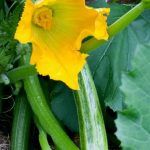Hydroponic vegetable gardening has been gaining popularity in recent years as an innovative and efficient way to grow fresh produce. This method of gardening involves growing plants without soil, using nutrient-rich water solutions instead. In this section, we will explore the concept of hydroponic gardening and its many benefits over traditional soil gardening.
Hydroponic gardening offers several advantages, including faster growth rates, higher yields, and the ability to grow crops year-round regardless of weather conditions. Additionally, it requires less space and water compared to traditional soil gardening, making it ideal for urban or indoor environments. By eliminating the need for soil, hydroponic systems also reduce the risk of pests and diseases that can affect plant growth.
In this article, we will provide a comprehensive guide to help you get started with your own hydroponic vegetable garden. From setting up the system to choosing the right vegetables and maintaining healthy plants, we will cover everything you need to know to successfully grow a bountiful harvest. Whether you are new to gardening or looking for a more sustainable and efficient way to produce fresh vegetables, hydroponic gardening offers a promising solution.
Setting Up Your Hydroponic System
When setting up a hydroponic system for vegetable gardening, the first step is to choose the type of system you want to use. There are several options available, including wick systems, water culture systems, ebb and flow systems, drip systems, and aeroponic systems. Each of these systems has its own advantages and disadvantages, so it’s important to consider factors such as space, budget, and the types of vegetables you want to grow.
Once you’ve chosen a hydroponic system that suits your needs, you’ll need to gather the necessary materials. This typically includes a reservoir or tank to hold the nutrient solution, a pump to circulate the solution, growing trays or pots to hold the plants, growing medium (such as perlite or rockwool), pH testing kit, and nutrient solutions specifically formulated for hydroponic vegetable gardening.
You may also need additional equipment such as grow lights or a timer for automated watering cycles.
After assembling all the materials needed for your hydroponic system, it’s time to set everything up according to the specific requirements of your chosen system. This may involve adjusting the pH level of the nutrient solution, ensuring proper aeration for plant roots in water-based systems, and setting up an appropriate lighting schedule if using grow lights.
It’s crucial to follow best practices and manufacturer instructions when setting up your hydroponic system to ensure optimal growing conditions for your vegetables.
Properly setting up a hydroponic system is essential for success in hydroponic vegetable gardening. Taking the time to select the right system and gather all necessary materials will set you on the path towards growing healthy and bountiful crops of vegetables year-round.
| Hydroponic Vegetable Gardening | Setting Up Your Hydroponic System |
|---|---|
| Hydroponics offers many benefits over traditional soil gardening | Selecting a suitable hydroponic system according to space and budget considerations |
| The essential materials needed include reservoir or tank, pump, growing trays or pots with medium | Gathering all required material before starting setup process |
| Adjusting pH level of nutrient solution is important during setup | Why following best practices during setup is crucial for optimal growth |
Choosing the Right Vegetables
Growing vegetables in a hydroponic system offers a wide range of possibilities, but not all crops are well-suited for this type of gardening. When choosing the right vegetables for hydroponic gardening, it’s essential to consider the plants that thrive in nutrient-rich water without the need for soil.
Some of the best types of vegetables to grow in a hydroponic system include leafy greens like lettuce, kale, and spinach, as well as herbs such as basil, cilantro, and mint. These plants typically have shallow root systems and adapt well to the controlled environment of a hydroponic setup.
Additionally, compact or dwarf varieties of traditional crops like tomatoes, cucumbers, peppers, and strawberries can also be successfully grown in a hydroponic system. These smaller plants are ideal for limited space and can still produce abundant yields when provided with the appropriate care and growing conditions. It’s important to research specific varieties that have been proven successful in hydroponic vegetable gardening to ensure optimal results.
When selecting the right varieties for your hydroponic garden, factors such as growth habit, light requirements, and resistance to common pests and diseases should be taken into account. Choosing disease-resistant cultivars can help minimize potential issues in a closed hydroponic environment where diseases could spread rapidly without the buffering effect of soil.
By carefully selecting the best types of vegetables suited for hydroponic growing and choosing the right varieties within those categories, you can maximize your chances of success and enjoy a bountiful harvest from your garden efforts.
| Vegetable Type | Examples |
|---|---|
| Leafy Greens | Lettuce, Kale, Spinach |
| Herbs | Basil, Cilantro, Mint |
| Compact Varieties | Tomatoes (dwarf), Cucumbers (dwarf), Peppers (dwarf), Strawberries (compact) |
Nutrient Solutions for Healthy Plants
When it comes to hydroponic vegetable gardening, providing the right nutrient solutions is essential for the health and growth of your plants. In a hydroponic system, plants rely solely on the nutrients provided in the water solution, as they don’t have access to nutrients found in traditional soil. This makes it crucial to understand the importance of nutrient solutions and how to properly feed your vegetables for optimal growth.
Understanding Nutrient Solutions
Nutrient solutions are formulated to provide all the essential elements that plants need to grow, such as nitrogen, potassium, phosphorus, calcium, magnesium, and other micronutrients. These solutions can be purchased pre-made or mixed at home using specific hydroponic fertilizers. It’s important to follow instructions carefully when mixing your own nutrient solutions to avoid overfeeding or starving your plants.
Feeding Your Vegetables
In a hydroponic system, plants are constantly exposed to their nutrient solution, so it’s crucial to maintain a proper balance of nutrients in the water. Regular monitoring of pH levels and nutrient concentrations is necessary to ensure that your vegetables are receiving the right amount of nutrients for healthy growth. Adjustments may need to be made depending on the stage of plant development and environmental conditions.
Choosing the Right Nutrient Solutions
When selecting a nutrient solution for your hydroponic vegetable garden, it’s important to consider the specific needs of the vegetables you are growing. Different types of vegetables may require different nutrient concentrations or ratios. Conducting research or seeking advice from experienced hydroponic gardeners can help you determine the best nutrient solutions for your particular crops. By understanding and properly feeding your vegetables with nutrient solutions, you can promote healthy growth and maximize yields in your hydroponic garden.
Maintaining Your Garden
Providing Adequate Light
One of the most important aspects of maintaining a hydroponic vegetable garden is ensuring that your plants receive adequate light. Since they are not growing in soil, hydroponic plants rely solely on the nutrients and light provided by their growing environment.
When setting up your hydroponic system, it’s crucial to place it in an area that receives ample sunlight or use artificial grow lights to simulate natural sunlight for at least 12 hours a day. Additionally, be sure to regularly check the intensity and placement of your lights to ensure that all plants are receiving the necessary amount of light for healthy growth.
Monitoring pH Levels
In hydroponic vegetable gardening, maintaining proper pH levels is essential for the overall health and growth of your plants. The ideal pH range for most vegetables in a hydroponic system typically falls between 5.5 and 6.5.
Regularly monitoring and adjusting the pH of your nutrient solution is important to prevent nutrient deficiencies and imbalances that can negatively impact plant health. Invest in a reliable pH testing kit or digital meter to monitor your nutrient solution’s pH levels and make adjustments as necessary to ensure optimal growing conditions for your vegetables.
Pest Control Measures
Just like traditional soil-based gardens, hydroponic vegetable gardens are susceptible to pests such as aphids, spider mites, and whiteflies. However, due to the controlled environment of hydroponic systems, pest infestations can spread rapidly if not addressed promptly.
Implement preventive measures such as regular inspection of plants for signs of pests, using organic pest control methods such as introducing beneficial insects or applying neem oil, and maintaining proper sanitation practices in your growing area. By staying vigilant with pest control measures, you can effectively maintain a healthy and thriving hydroponic vegetable garden.
By following these tips for maintaining a healthy hydroponic vegetable garden, including providing adequate light, monitoring pH levels, and implementing pest control measures effectively, you can ensure that your plants thrive and produce an abundant harvest. Remember that consistent care and attention to detail are key factors in the success of your hydroponic garden.
Overall maintaining a healthy hydroponic vegetable garden requires sustained effort; however it also makes achieving bountiful yields all the more rewarding.
Harvesting and Enjoying Your Bounty
Harvesting and enjoying the fruits of your labor is one of the most rewarding aspects of hydroponic vegetable gardening. By following best practices for harvesting and enjoying your bounty, you can ensure that you get the most out of your hydroponic garden.
When it comes to harvesting vegetables from your hydroponic system, timing is key. Different vegetables have different optimal harvest times, so it’s important to do some research on the specific vegetables you are growing. For leafy greens like lettuce and spinach, you can begin harvesting when the leaves are large enough to eat. For fruiting vegetables like tomatoes and peppers, wait until the fruits are fully mature before picking them.
Once you’ve harvested your hydroponically grown vegetables, it’s time to enjoy them at their freshest. There’s nothing quite like the taste of freshly picked produce from your own garden. Whether you’re using them in a salad, stir-fry, or simply enjoying them raw, hydroponically grown vegetables are packed with flavor and nutrients. Plus, knowing that they were grown in a clean and controlled environment gives you peace of mind about their safety and quality.
Best Practices for Harvesting and Enjoying Your Bounty
- Harvest leafy greens when the leaves are large enough to eat
- Allow fruiting vegetables to fully mature before picking
- Enjoy your freshly harvested vegetables in salads, stir-fries, or raw for maximum flavor and nutrition
By following these best practices for harvesting and enjoying your hydroponically grown vegetables, you can make the most of your efforts and savor the delicious results of your labor. Remember that the key to a successful harvest is proper timing and handling to ensure that your vegetables are at their peak when they reach your plate.
Troubleshooting Common Issues
Hydroponic vegetable gardening offers many benefits, such as efficient use of space, reduced water usage, and faster growth rates. However, like any gardening method, hydroponics can come with its own set of challenges. It’s important to be prepared for common issues that may arise and know how to troubleshoot them effectively.
Here are some common problems that you may encounter in your hydroponic vegetable garden and how to address them:
- Nutrient Deficiencies: One common issue in hydroponic gardening is nutrient deficiencies in plants. This can occur if the nutrient solution is not properly balanced or if there is a problem with nutrient uptake. To address this issue, regularly check the pH and EC levels of your nutrient solution and adjust as needed. Additionally, consider adding supplements to the solution to ensure that your plants are receiving all the essential nutrients they need.
- Algae Growth: Algae growth in the nutrient solution or on the growing medium can be another challenge in hydroponic gardening. This issue can arise if the growing environment is too warm or if light is penetrating the nutrient solution. To combat algae growth, cover your reservoir to block out light, use an opaque growing medium, and maintain proper temperature and air circulation in your grow space.
- Pest Infestations: While hydroponic systems can reduce the risk of pest infestations compared to traditional soil gardening, they are not immune to pests. Common pests in hydroponic systems include spider mites and aphids. To address pest infestations, regularly inspect your plants for signs of pests and take preventive measures such as using insecticidal soaps or introducing beneficial insects into your grow space.
By being proactive and informed about potential issues in hydroponic vegetable gardening, you can effectively troubleshoot these problems and maintain a healthy garden for optimal plant growth and abundant harvests.
Conclusion
In conclusion, hydroponic vegetable gardening offers numerous advantages over traditional soil gardening, including efficient use of space, water, and nutrients. By eliminating the need for soil, this method also reduces the risk of pests and diseases, leading to healthier plants and higher yields. Additionally, hydroponic gardening allows for greater control over growing conditions, resulting in faster growth and a longer growing season.
Setting up a hydroponic system may seem daunting at first, but with the right materials and guidance, it can be a rewarding and relatively straightforward process. Choosing the right vegetables for your hydroponic garden is essential for success. Leafy greens such as lettuce and spinach, as well as herbs like basil and mint, are particularly well-suited for hydroponic cultivation.
Once your garden is up and running, maintenance will be key to ensuring healthy plant growth. This includes closely monitoring light levels and pH levels, as well as providing the necessary nutrient solutions. With some troubleshooting tips at hand to address common issues that may arise along the way, anyone can enjoy the benefits of successful hydroponic vegetable gardening. So why not give it a try? The results are sure to be bountiful.
Frequently Asked Questions
What Vegetables Can You Grow Hydroponically?
Many different vegetables can be grown hydroponically, including lettuce, spinach, tomatoes, cucumbers, peppers, and herbs like basil and cilantro. These plants thrive in a hydroponic system and can produce high yields in a controlled environment.
What Are Three Plants That Are Not Recommended for Hydroponics?
Three plants that are not recommended for hydroponics are carrots, potatoes, and sweet corn. These plants have extensive root systems or specific growing requirements that make them less suitable for a hydroponic setup compared to other vegetables.
How Do You Start a Hydroponic Vegetable Garden?
To start a hydroponic vegetable garden, you will need to set up a growing area with proper lighting, water supply, and nutrients. Choose the right kind of system for your space and desired crops – whether it’s a nutrient film technique (NFT), deep water culture (DWC), or another method.
Then select the vegetables you want to grow and plant them in the growing medium of your chosen hydroponic system. Finally, monitor the environmental conditions closely and adjust as needed to ensure healthy plant growth and development.

If you’re looking to get into vegetable gardening, or are just looking for some tips on how to make your current garden better, then you’ve come to the right place! My name is Ethel and I have been gardening for years. In this blog, I’m going to share with you some of my best tips on how to create a successful vegetable garden.





